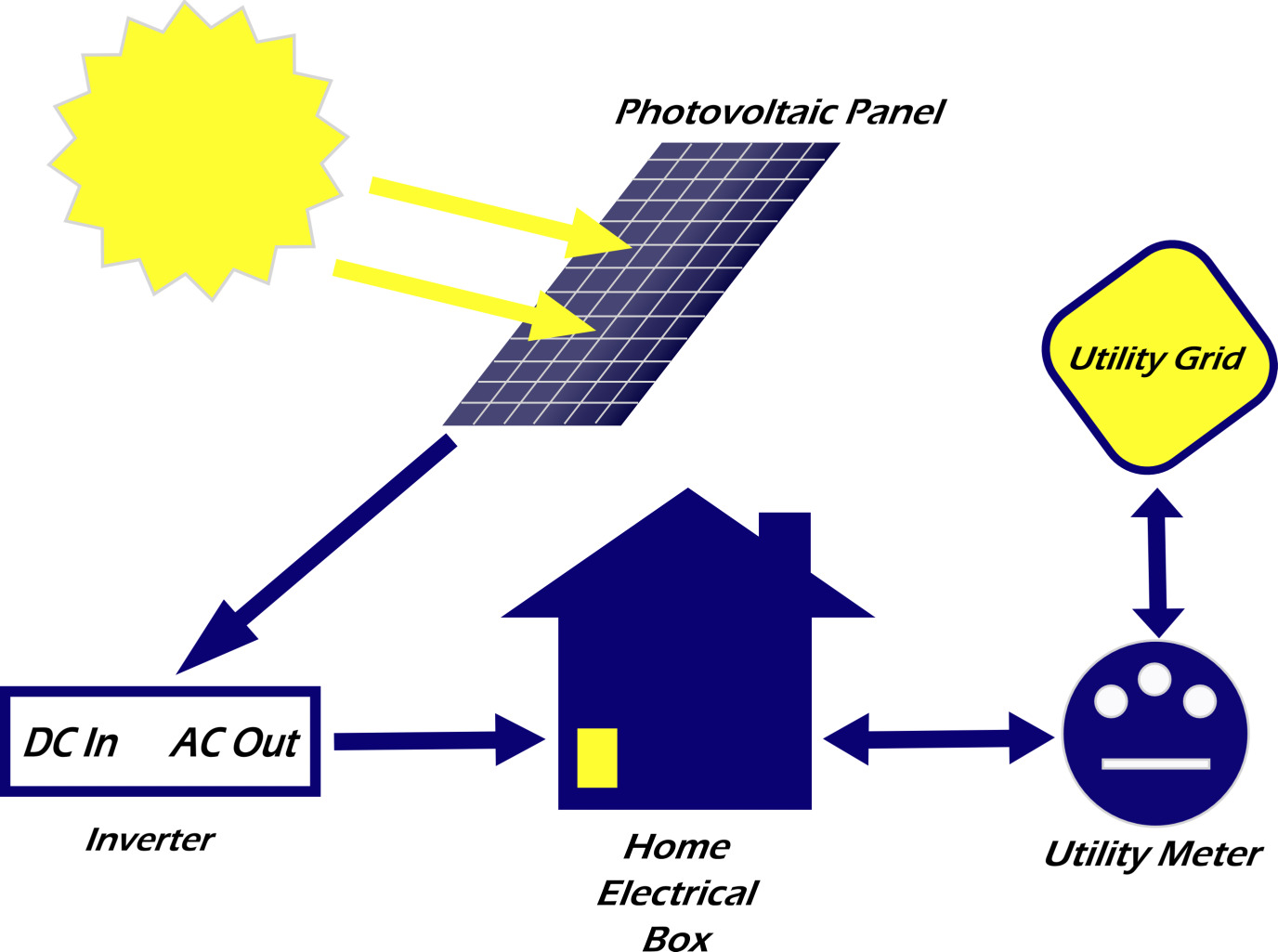Solar panels work through what is called a photovoltaic process – where radiation energy (photo) is absorbed and generates electricity (voltaic). This is called a photovoltaic process.
Radiation energy is absorbed by semi conductor cells – normally silicon – and transformed from photo energy (light) into voltaic (electrical current). When the sun’s radiation hits a silicon atom, a photon of light energy is absorbed, ‘knocking off’ an electron. These released electrons create an electric current. The electric current then goes to an inverter, which converts the current from DC (direct current) to AC (alternating current). the system is then connected to the mains power or electricity grid.
Traditional systems, called crystalline silicon solar modules, involve wafers of refined silicon beneath sheets of glass. The panels are surrounded by a metal frame.
A solar panel installer connects crystalline silicon panels – made with silicon wafers, glass panelling, and a frame. These are by far the most common solar panels. If you’ve come across a solar panel installation, chances are it uses crystalline silicon technology.
Current off the shelf crystalline silicon systems are generally capable of converting up to about 18 % of solar radiation exposure into useable electricity. This is termed as a photovoltaic efficiency of 18%. The main complaint of crystalline silicon is that the systems are expensive and bulky, installation requires a lot of wiring and labour, and that glass can be prone to damage.
Our courage, vision and knowledge are the foundations of our strategy. For our customers and partners, we at EnerTech Alternative Energy Solutions Inc. are building the promise of excellence.
Ejaz Alam, Founder & Chief Consultant

2015 © ENERTECH [Alternative Energy Solutions Inc.] ALL Rights Reserved.
Privacy Policy | Terms of Service